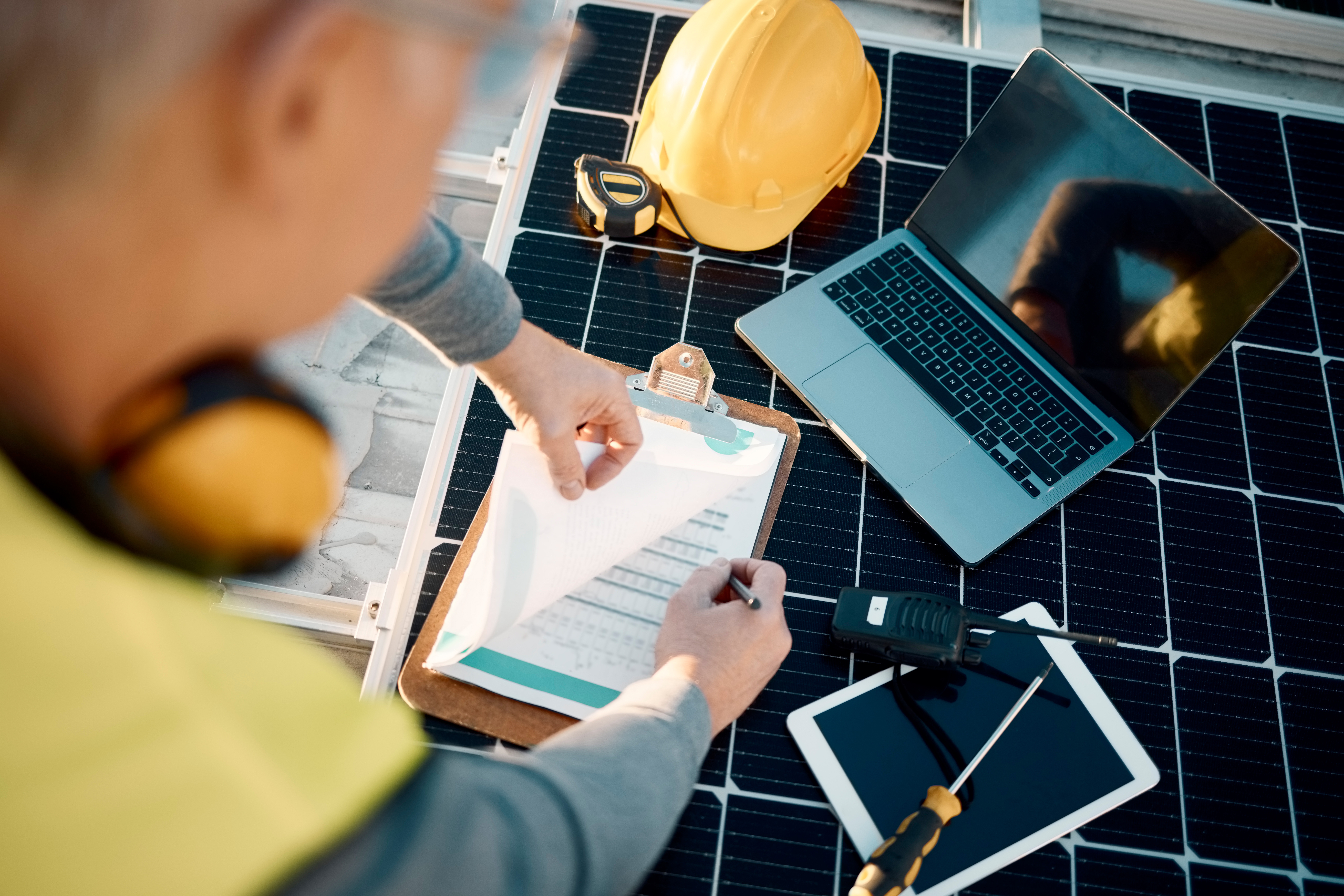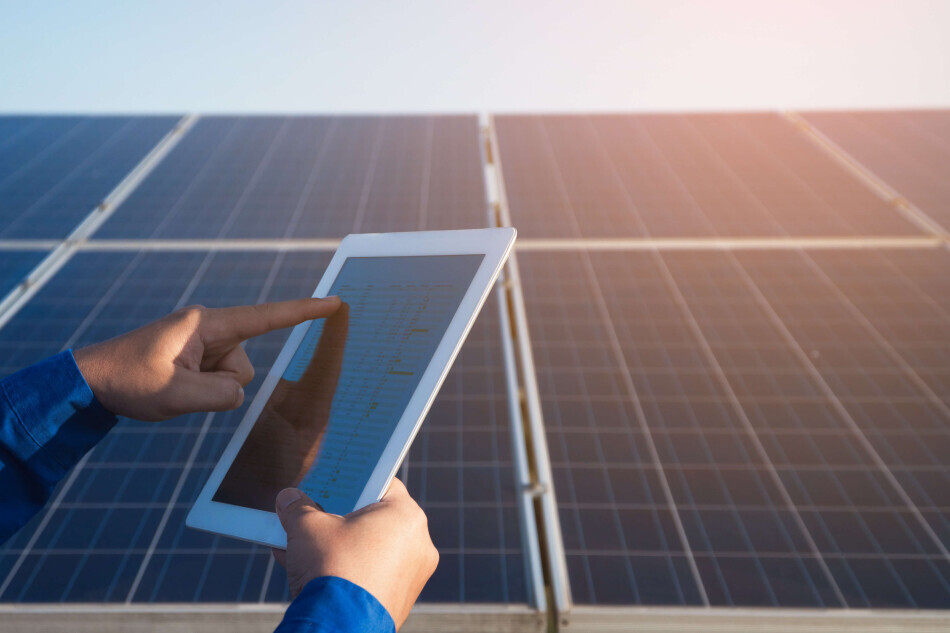
In the last decade, a surge has been observed in the production of cleaner energy, and solar panels have stood the test of time. Installation has become more convenient and affordable over time. However, solar panel maintenance requires diligent effort.
A National Renewable Energy Laboratory (NREL) study shows that solar panels’ output is degrading by 0.5% yearly. This demonstrates that maintaining them is a quintessential part of the journey to produce maximum efficiency.
Several businesses struggle to keep a regular maintenance check and have unstructured maintenance routines. Are you one of them? Then, this blog is for you. In this blog, we’ll walk you through the process of creating a comprehensive solar panel maintenance checklist that helps streamline operations and bring efficiency.
Importance of a Structured Solar Panel Maintenance Checklist
How can businesses ensure the long term efficiency and reliability of solar energy systems? For this, a structured panel maintenance checklist is essential to optimize the efficiency and longevity of your energy systems. By implementing a clear, organized approach, businesses can ensure timely inspections, identify potential issues early, and minimize downtime. This proactive strategy not only enhances system performance but also reduces long term operational costs. It includes:
- Consistency: It ensures all maintenance tasks are performed uniformly and mitigates the risk of oversight.
- Efficiency: A well defined checklist allows technicians to work systematically, which minimizes downtime.
- Performance Optimization: Regular maintenance ensures the panels are cleaner and can boost energy production by up to 30%.
Essential Components to Build a Solar Maintenance Checklist
An Energy Information Administration (EIA) study shows that the solar energy industry will be booming in 2025. Over 7.3 million U.S. homes are powered by it. But, be it residential or commercial setups, panels are exposed to the open air, making them susceptible to many things.
Regular maintenance can help address these issues promptly. However, due to the extensive and intricate details, you or your team might overlook a few parts. A proper solar panel maintenance checklist won’t let you miss it. Here’s what you need to cover in your maintenance checklist:
Pre-Inspection Checklist
You can create a pre-inspection checklist before starting an inspection. This list should have:
Documentation: Add all permits, approvals, and paperwork from the Authority Having Jurisdiction (AHJ) and the installation company.
Site plan: Review your site plan to determine the location of the panels and check for any possible dangers around the area.
Safety tools: Ensure safety gear (gloves, harnesses, voltage detectors).
Weather considerations: Inspect the weather conditions before planning your solar panel inspection.
Safety Precautions
- Ensure the system is powered down before inspection.
- Check for loose wiring that may pose a risk.
Visual Inspection
- Panel Surface Condition: Inspect if there are any cracks, chips, damage, or discolorations on the panel.
- Hinder Sunlight: Look for dirt, debris, leaves, or bird droppings, which affect system efficiency.
- Mounting Structures: Ensure panels are securely mounted and free from corrosion/damage.
Manufacturer’s Guidelines
- Every brand has specific maintenance recommendations.
- Review the manual to understand solar cleaning frequency, weight limitation, and other instructions.
Electrical System Checks
- Wiring and Connections: Check for signs of wear, loose connections, or overheating.
- Inverter Performance: Verify that DC and AC disconnects are operating correctly.
- Labeling: Verify that the wires in the combiner boxes perfectly match the labeling.
Check the Inverter
- Confirm that the inverter is functioning properly (check for green status lights).
- Inspect the inverter for any overheating signs or unusual noises.
- Ensure that all ventilation pathways around the inverter are clear.

Performance Monitoring
- Energy Output Tracking: Use software to track energy production & detect performance drops.
- Software Tools: Set up alerts for anomalies in maintenance systems.
- Performance Level: Compare current energy production with historical data for any noticeable decrease.
Check Battery (If Applicable)
- Inspect battery charge and discharge cycles.
- Look for any signs of battery degradation or leaks.
- Test the battery voltage to ensure it’s within optimal levels.
Cleaning Protocols
- Waste Removal: Ensure any kind of waste removal from the solar panels for deep cleaning.
- Cleaning Practices: Use a soft brush or cloth to remove dust and dirt from the surface.
- Precaution: Avoid high-pressure washing and harsh chemicals as per the manual to prevent panel damage.
Environmental Factors
- Shading Analysis: Ensure no new obstructions are casting shadows on the panels.
- Weather Impact: Address any weather-related damages, especially after extreme conditions.
Documentation & Reporting
- Maintenance Details: Record the date, technician name, system performance data, and inspection findings.
- Repairs & Actions: Keep a record of any repairs, replacements, and safety checks performed.
- Follow-up & Recommendations: Note any further actions needed and the technician’s signature for confirmation.
- Maintain a Logbook: Save all maintenance activities and repair details for future reference, preferably in online cloud storage.
Frequency of Maintenance Tasks
A common question is, “How often should you inspect and clean the panels?”
The answer depends on various factors such as system size, climate, and environmental conditions. The ones placed in dusty areas require more cleaning than others. A well-structured solar panel maintenance schedule can resolve this problem. The right use of solar business management software for scheduling and automation ensures no task is missed.
This tool helps assign maintenance tasks, send reminders, and track completed work, saving time and reducing manual efforts. You can establish a regular inspection timetable with a scheduling tool and ensure the timely detection and resolution of potential issues.
Common Mistakes to Avoid Before Maintenance
- Ignoring regular maintenance until performance drops.
- Using the wrong cleaning materials that damage the panels.
- Skipping documentation leads to inefficiencies.
- Not training technicians properly.
Final Verdict
In a nutshell, a structured solar panel maintenance checklist ensures peak performance, reduces downtime, and cuts costs. Adding on to it, regular inspections, cleaning, and repairs prevent issues. Also, the integration of perfect software doubles productivity and mitigates loss. Embrace the change in the energy sector and shift to modern methods that sustain long-term solar system benefits.
